Creating Macroalgal Cultures
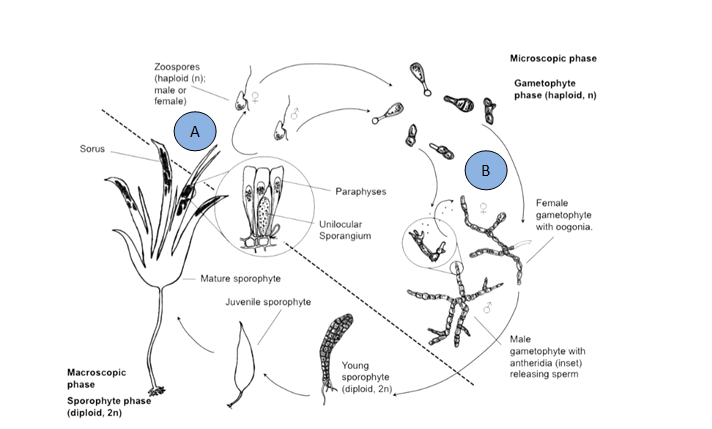
Figure 1: The Life Cycle of Laminaria digitata taken from Edwards and Watson: Aquaculture Explained: Cultivating Laminaria digitata
In order to cultivate kelp species at QML, we first create and maintain cultures of various species from different locations and collection times. As shown in Figure 1, kelp plants produce spores from dark patches on the blade called sorus (Fig 2). By inducing the plants to release these spores, we can collect them in flasks where they will develop into gametophytes. Gametophytes will be either male or female, and will go on to produce either eggs or sperm.
We can manage these cultures using light manipulation techniques - using red light to grow the cultures will result in them cloning without producing eggs and sperm, which means the cultures can increase in size until they are ready to be used. At this point they are placed under blue light and fertilisation can occur, leading to the growth of adult plants (sporophytes). These fertile cultures are sprayed onto twine where they will develop into juvenile plants (Fig 3).
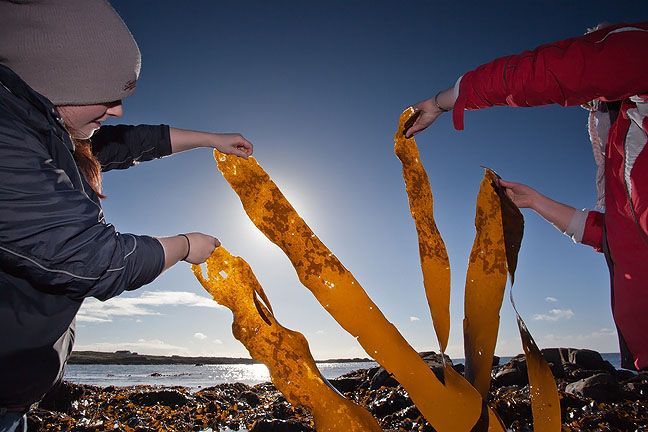
Figure 2: Fertile sorus patches (darker regions) on Laminaria digitata blades
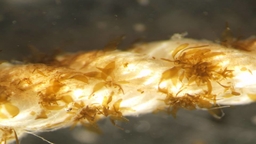
Figure 3: Juvenile plants developing on twine
These juvenile plants will continue to develop until they are approximately 5mm in length, where they will then be ready to deploy onto longlines in Strangford Lough.
The twine has been wrapped around plastic drainpipe (seeders) as shown in Figure 4 and each seeder will hold around 35m of length. Using this method, QML can grow enough juvenile seaweed on twine to cover an area 2.5km long using 4-5 bathtub sized containers. Therefore a fairly small hatchery, with a low land based footprint can service a large growing area at sea.
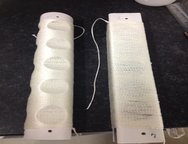
Figure 4
Seeders ready to be sprayed
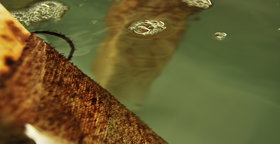
Figure 5
Seeders sprayed with gametophyte culture begin to develop sporophytes
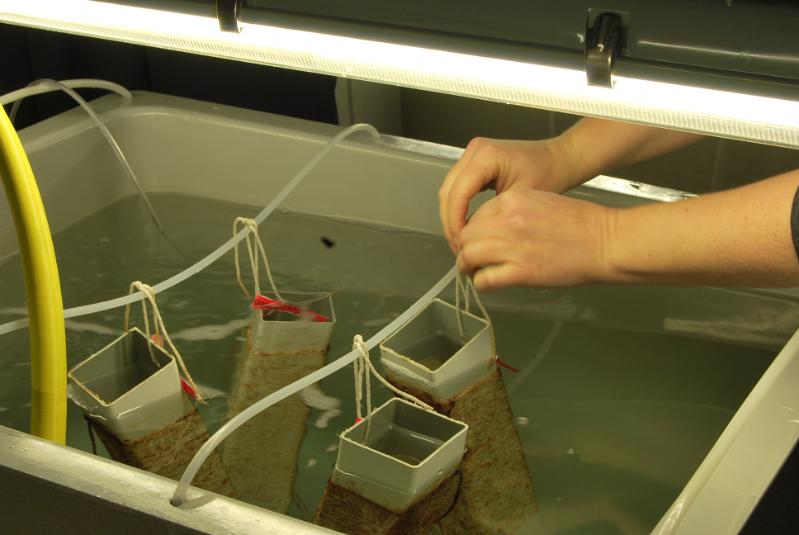
Figure 6
Growing baths in the QML hatchery
